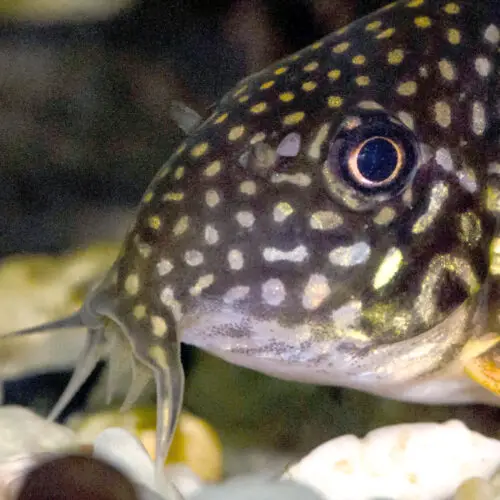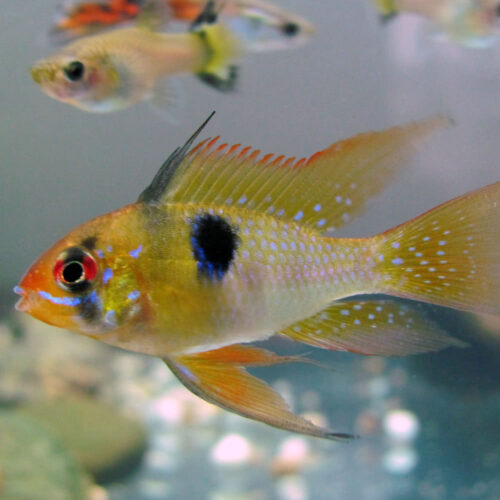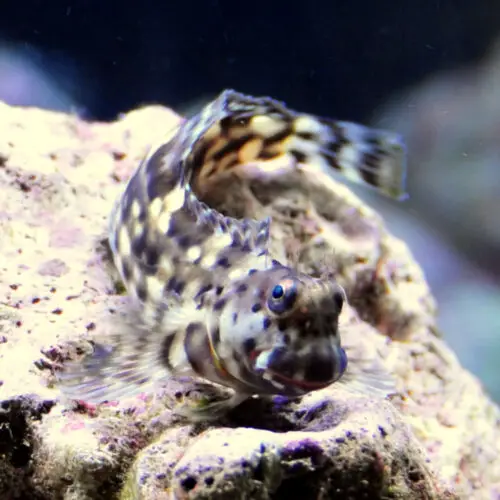The Ember Tetra, or Hyphessobrycon amandae, is a small and vibrant freshwater fish that is highly sought after by fish enthusiasts. This charming tetra is known for its bright orange to red coloration, making it a stunning addition to any aquarium. In this article, we will explore the characteristics, behavior, origin, ideal water conditions, tank mates, care, health, diet, and breeding of the Ember Tetra.
Characteristics
The Ember Tetra is a small species of fish that typically reaches a maximum length of about 2 centimeters (0.8 inches). Its body is slender and elongated, with a somewhat translucent appearance. The vibrant orange to red coloration covers the entire body, including the fins, giving it a fiery glow. The eyes of the Ember Tetra are dark and contrasting, adding to its overall beauty.
Behavior
Ember Tetras are peaceful and shoaling fish, meaning they thrive in groups. It is essential to keep a minimum of six Ember Tetras in a aquarium, as they feel more secure and display their best behavior when in a group. These fish are active swimmers, constantly exploring their surroundings and interacting with each other.
Origin
The Ember Tetra is native to the Araguaia River basin in the Brazilian Amazon. The exact location of their natural habitat is the southern part of the basin, around the state of Tocantins. They were first discovered by Heiko Bleher, a renowned German aquarist and explorer, in 1987. Due to their attractive appearance and peaceful nature, the Ember Tetra quickly gained popularity in the aquarium hobby.
Natural Habitat
In the wild, Ember Tetras inhabit slow-moving rivers, streams, and flooded forest areas. These areas are densely vegetated, providing ample hiding spots and shelter for the fish. The water in their natural habitat is usually clear and soft, with a temperature range of 24-28°C (75-82°F). The Ember Tetra is well adapted to living in these conditions and has specific requirements to thrive in captivity.
Ideal Water Characteristics
Ember Tetras require specific water conditions to ensure their well-being. The following are the ideal water parameters for these fish:
- Temperature: 24-28°C (75-82°F)
- pH Level: 5.5-7.0
- Hardness: 1-5 dGH (soft water)
It is important to maintain stable water parameters in the aquarium, as Ember Tetras are sensitive to fluctuations. Regular water changes and the use of a reliable heater and thermometer are essential to provide the best conditions for these fish.
Tank Mates
Ember Tetras are generally peaceful and do well with other small, non-aggressive fish. However, it is crucial to choose tank mates that prefer similar water conditions and have a peaceful demeanor. Suitable tank mates for Ember Tetras include:
- Dwarf shrimp (such as Cherry Shrimp or Amano Shrimp)
- Micro Rasboras
- Small Corydoras catfish
Avoid housing Ember Tetras with large or aggressive fish, as they can become stressed or intimidated. Additionally, avoid keeping them with fin-nippers, as the Ember Tetra’s delicate fins can be a target.
Care
Providing proper care for Ember Tetras involves creating an environment that mimics their natural habitat. Here are some care tips:
- Provide a well-planted aquarium with plenty of hiding spots using live or artificial plants.
- Ensure the tank has a secure lid, as Ember Tetras are known to jump when startled or stressed.
- Keep the water clean and stable by performing regular water changes.
- Monitor the water parameters using test kits to ensure they remain within the ideal range.
- Avoid sudden changes in water conditions or any stressful situations.
- Feed the fish a balanced diet and monitor their feeding habits to ensure they are eating properly.
Health & Diseases
Ember Tetras are generally hardy fish but can be susceptible to common aquarium fish diseases if not provided with proper care. Some common diseases that can affect Ember Tetras include fungal infections, bacterial infections, and parasitic infestations. It is essential to monitor the fish regularly for any signs of illness, such as loss of appetite, abnormal behavior, or visible signs of disease. Quick intervention and the use of appropriate medications are necessary to treat any illnesses.
Diet and Feeding
Ember Tetras are omnivorous fish with a preference for small invertebrates and insect larvae in their natural diet. In captivity, a varied diet should be provided to ensure their nutritional needs are met. A high-quality flake or pellet food can serve as the staple diet, supplemented with live or frozen foods such as brine shrimp, daphnia, or bloodworms. It is important to feed them small portions multiple times a day, as they have small stomachs and benefit from regular feeding.
Breeding
Breeding Ember Tetras is relatively straightforward, as they are egg scatterers. To initiate breeding, it is recommended to set up a separate breeding tank with soft and slightly acidic water. The tank should be densely planted, with sufficient hiding spots for the spawning fish. Introducing a group of six or more Ember Tetras, with an equal ratio of males to females, can increase breeding success.
During the breeding process, the females will scatter their eggs among the plants or substrate. Once the spawning is complete, it is crucial to remove the adult fish to prevent them from consuming the eggs. The eggs will hatch within 24-48 hours, and the fry will become free-swimming after a few days. Feeding the fry with specialized liquid or powdered fry food is recommended to ensure their proper growth and development.
Images
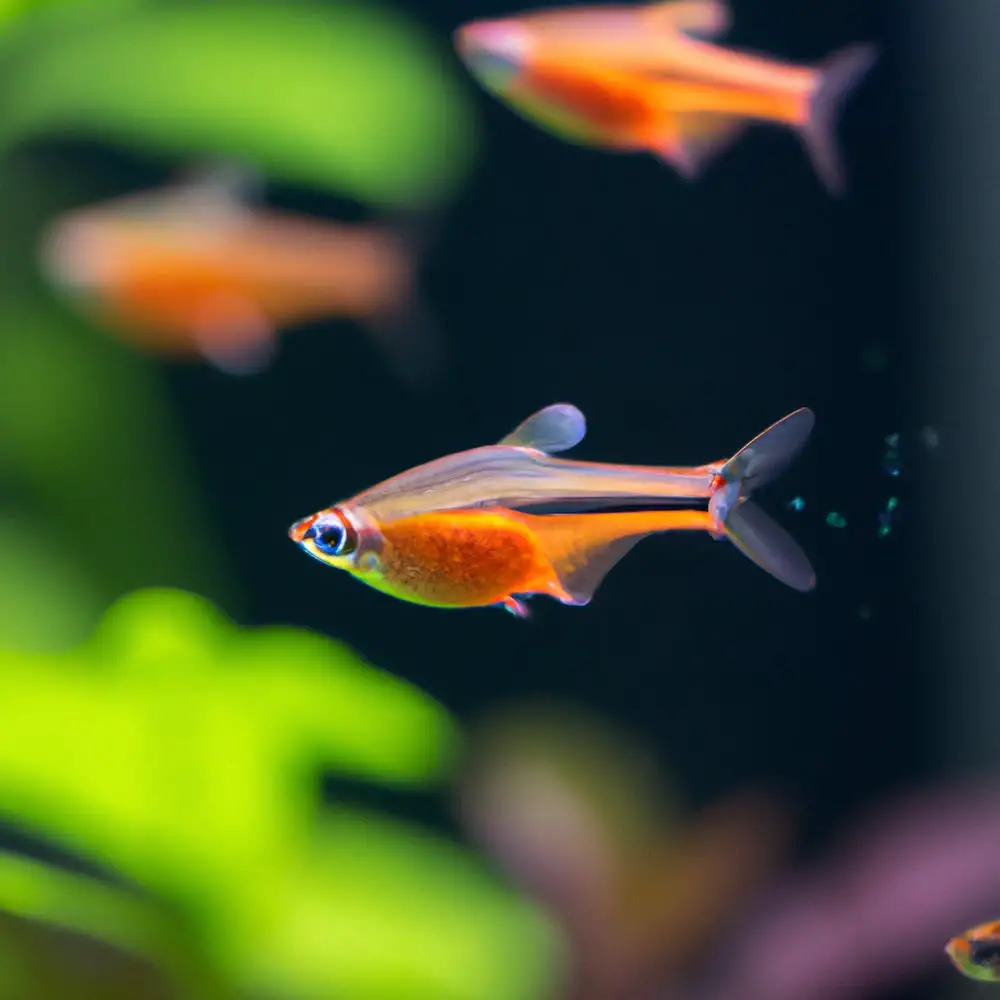
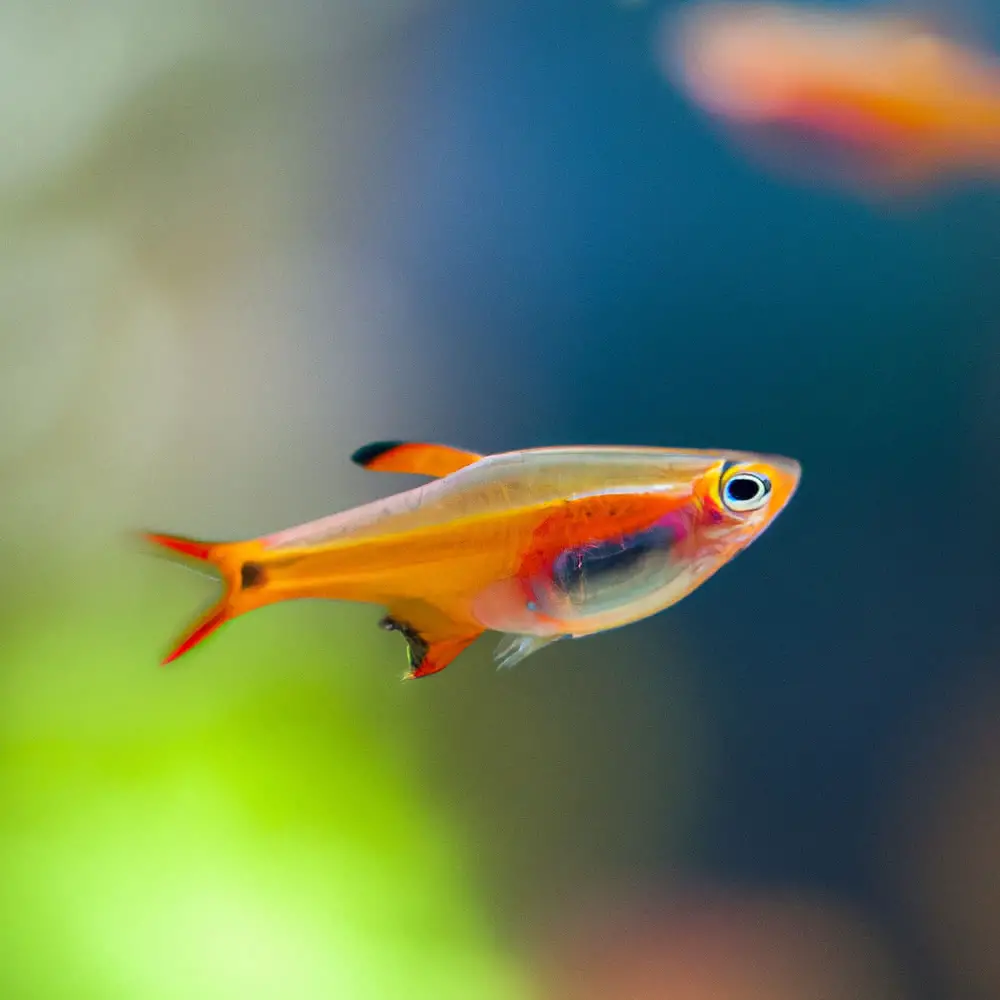
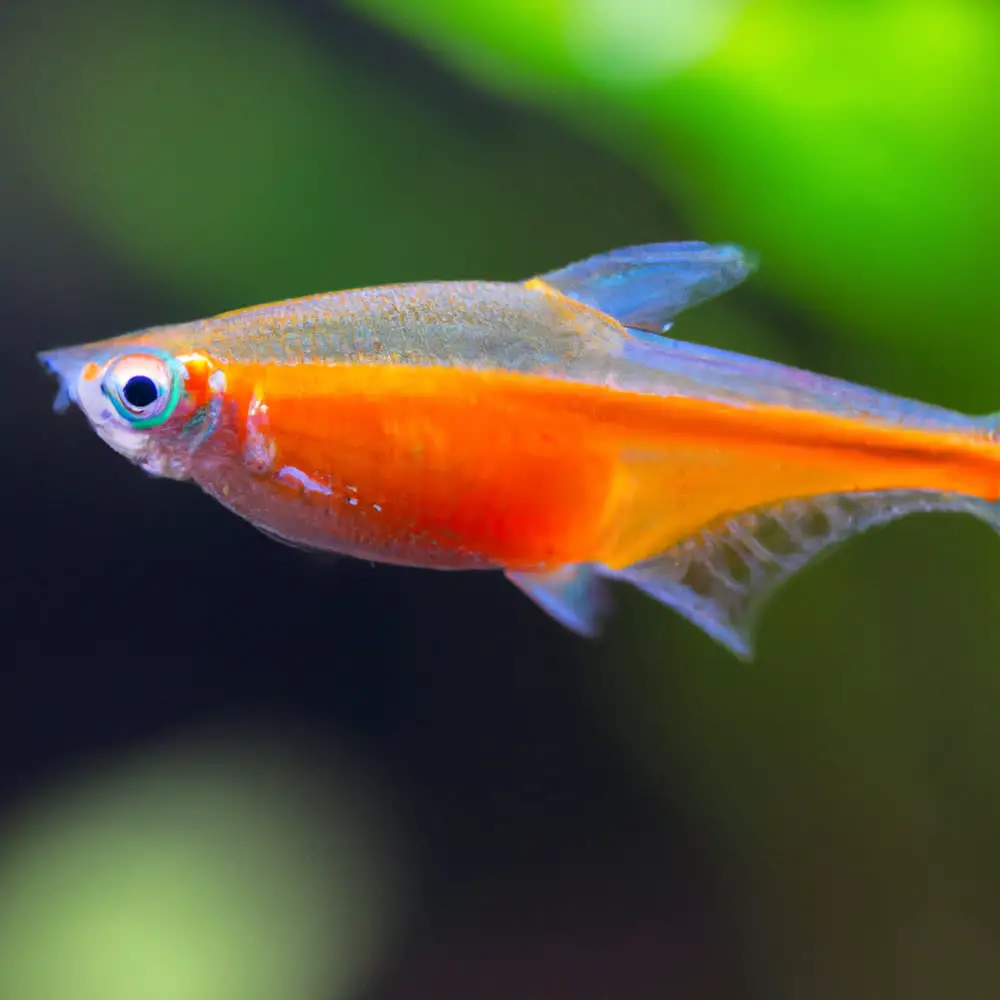
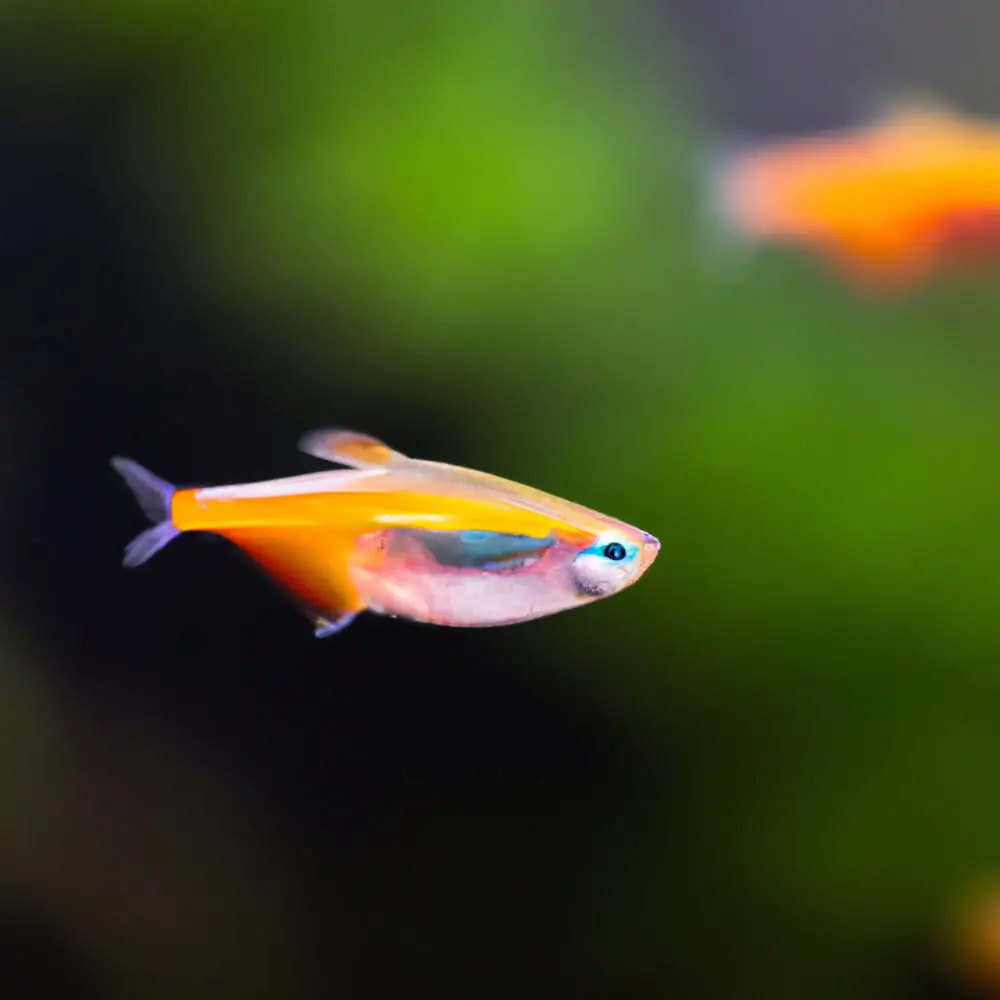
F.A.Q.
What is an Ember Tetra fish?
An Ember Tetra fish is a small, peaceful freshwater fish that is popular among hobbyists for its vibrant red coloration.
What is the scientific name of Ember Tetra fish?
The scientific name of Ember Tetra fish is Hyphessobrycon amandae.
How big do Ember Tetra fish grow?
Ember Tetra fish typically grow to be around 1 inch (2.5 cm) in length.
What is the lifespan of an Ember Tetra fish?
The lifespan of an Ember Tetra fish is usually around 2 to 3 years, although with proper care they can sometimes live longer.
What is the natural habitat of Ember Tetra fish?
Ember Tetra fish are native to the blackwater streams and tributaries of the Rio Araguaia in Brazil.
Can Ember Tetra fish be kept in a community aquarium?
Yes, Ember Tetra fish are peaceful and can be kept in a community aquarium with other small, non-aggressive fish.
What are the ideal water parameters for Ember Tetra fish?
The ideal water parameters for Ember Tetra fish are a temperature between 72-82°F (22-28°C), a pH of 5.0-7.0, and soft, slightly acidic water.
What is the best tank size for Ember Tetra fish?
A minimum tank size of 10 gallons (38 liters) is recommended for keeping Ember Tetra fish.
How many Ember Tetra fish can be kept in a tank?
Ember Tetra fish are shoaling fish and should be kept in groups of at least 6 individuals. A larger group of 10 to 12 fish is even better.
Do Ember Tetra fish need a heater in their tank?
Yes, Ember Tetra fish are tropical fish and require a heater to maintain a stable temperature in their tank.
What should I feed my Ember Tetra fish?
Ember Tetra fish are omnivores and should be fed a balanced diet of high-quality flake or pellet food, as well as small live or frozen foods such as brine shrimp or bloodworms.
Can Ember Tetra fish eat flakes and pellets?
Yes, Ember Tetra fish can eat flakes and pellets. It is important to provide them with a varied diet to ensure they receive all the necessary nutrients.
How often should I feed my Ember Tetra fish?
Ember Tetra fish should be fed small amounts of food 2-3 times a day. Only feed them what they can consume in a few minutes to avoid overfeeding and water quality issues.
Can Ember Tetra fish be kept with other small fish?
Yes, Ember Tetra fish can be kept with other small, peaceful fish that share similar water parameter requirements.
Can Ember Tetra fish be kept with bettas?
Ember Tetra fish generally do well with bettas as long as the tank is spacious enough and there are plenty of hiding spots and visual barriers to prevent aggression.
What are some suitable tank mates for Ember Tetra fish?
Some suitable tank mates for Ember Tetra fish include other small tetras, rasboras, danios, guppies, and peaceful bottom-dwelling fish like corydoras catfish.
Are Ember Tetra fish shoaling fish?
Yes, Ember Tetra fish are shoaling fish and should be kept in groups to feel secure and exhibit their natural behavior.
How can I tell the gender of an Ember Tetra fish?
Male Ember Tetra fish are usually slimmer and more colorful than females. Females may also have a slightly rounder belly when they are ready to breed.
Do Ember Tetra fish breed in home aquariums?
Yes, Ember Tetra fish can breed in home aquariums under the right conditions.
What is the breeding process of Ember Tetra fish?
Ember Tetra fish are egg-layers and the breeding process involves the male courting the female, the female laying eggs on plants or other surfaces, and the male fertilizing the eggs.
How many eggs do Ember Tetra fish lay?
Ember Tetra fish can lay up to 100 eggs during a breeding session.
How long does it take for Ember Tetra fish eggs to hatch?
It usually takes around 24 to 48 hours for Ember Tetra fish eggs to hatch.
How can I care for Ember Tetra fish fry?
Ember Tetra fish fry are tiny and require special care. They should be fed with liquid fry food or very finely crushed flakes and kept in a separate tank or breeding net to protect them from being eaten by adult fish.
Are Ember Tetra fish easy to care for?
Yes, Ember Tetra fish are generally considered to be easy to care for, making them suitable for beginner fish keepers.
Do Ember Tetra fish require a lot of maintenance?
Ember Tetra fish are relatively low maintenance compared to other fish species. They require regular feeding, water changes, and general tank maintenance to keep their environment clean and healthy.
Can Ember Tetra fish be kept in a planted tank?
Yes, Ember Tetra fish can thrive in a planted tank. The presence of live plants not only adds to their natural habitat but also provides hiding places and additional oxygen for the fish.
Do Ember Tetra fish need a lot of light?
Ember Tetra fish do not require intense lighting. They prefer low to moderate light levels, which can be achieved with standard aquarium lighting.
Can Ember Tetra fish be kept in a low-tech aquarium?
Yes, Ember Tetra fish can thrive in a low-tech or non-CO2 injected aquarium. They are not particularly demanding in terms of water parameters or lighting requirements.
What are some common diseases that affect Ember Tetra fish?
Some common diseases that can affect Ember Tetra fish include ich, fungal infections, bacterial infections, and fin rot.
How can I prevent diseases in Ember Tetra fish?
To prevent diseases, it is important to maintain clean water conditions, provide a balanced and nutritious diet, avoid overstocking the tank, and quarantine any new fish before introducing them to an established tank.
Can Ember Tetra fish jump out of the tank?
Yes, Ember Tetra fish have been known to jump out of tanks if startled or stressed.
How can I prevent Ember Tetra fish from jumping?
To prevent Ember Tetra fish from jumping out of the tank, it is advisable to use a securely fitting lid or cover on the aquarium.
Do Ember Tetra fish need a filter?
It is recommended to use a filter in the aquarium for Ember Tetra fish. A filter helps maintain water quality by removing excess waste and toxins.
How often should I do water changes for Ember Tetra fish?
Regular water changes of about 25% to 50% should be done every one to two weeks to ensure good water quality for Ember Tetra fish.
Can Ember Tetra fish tolerate high water temperatures?
Ember Tetra fish do best in cooler water temperatures ranging from 72°F to 78°F (22°C to 26°C). They may become stressed or unwell in higher temperatures.
Can Ember Tetra fish tolerate low water temperatures?
Ember Tetra fish can tolerate lower water temperatures, but it is advisable to keep them within their preferred temperature range of 72°F to 78°F (22°C to 26°C) for optimal health and activity.
Can I keep Ember Tetra fish in a coldwater tank?
No, Ember Tetra fish are tropical fish and require warmer water temperatures. They are not suited for coldwater tanks.
Do Ember Tetra fish require a lot of oxygen in the water?
Ember Tetra fish, like most fish, require a sufficient amount of dissolved oxygen in the water to breathe and thrive.
Can Ember Tetra fish tolerate low oxygen levels?
Ember Tetra fish are relatively hardy and can tolerate slightly lower oxygen levels, but it is important to maintain adequate oxygenation through proper tank filtration, surface agitation, and aeration.
How can I increase oxygen levels in my Ember Tetra fish tank?
You can increase oxygen levels in the tank by adding an air stone or increasing surface agitation with a filter or a specifically designed surface skimmer.
Can Ember Tetra fish live in brackish water?
No, Ember Tetra fish are freshwater species and do not thrive in brackish water conditions.
Can Ember Tetra fish live in alkaline water?
Ember Tetra fish prefer slightly acidic to neutral water conditions with a pH level between 6.0 and 7.5. They may not do well in highly alkaline water.
Can Ember Tetra fish live in acidic water?
Yes, Ember Tetra fish can tolerate slightly acidic water conditions, but it is important to maintain a stable pH level within their preferred range of 6.0 to 7.5.
Do Ember Tetra fish require a lot of space to swim?
Ember Tetra fish are small in size and do not require a substantial amount of swimming space. However, they do appreciate having enough room to swim and explore.
Can Ember Tetra fish live in a small tank?
Ember Tetra fish can be kept in smaller tanks, such as a 10-gallon aquarium, as long as they are not overcrowded and their water parameters are well-maintained.
What is the cost of Ember Tetra fish?
The cost of Ember Tetra fish can vary depending on factors such as location, availability, and the size of the fish. On average, they typically range from $2 to $5 per fish.
Where can I buy Ember Tetra fish?
Ember Tetra fish can be purchased from pet stores, aquarium specialty stores, online fish stores, or from local fish breeders.
Can Ember Tetra fish be kept in a bowl or a jar?
No, Ember Tetra fish should not be kept in a bowl or a jar. They require a properly filtered and heated aquarium with adequate swimming space.
Can Ember Tetra fish live in a pond?
Ember Tetra fish are not typically suited for living in outdoor ponds. They are tropical freshwater fish that thrive in controlled indoor aquarium environments.
Can I keep Ember Tetra fish with shrimp?
Ember Tetra fish generally coexist well with shrimp species that are not too small or overly delicate. However, some caution should be exercised as individual fish and shrimp may vary in temperament.
Are Ember Tetra fish fin nippers?
No, Ember Tetra fish are not known to be fin nippers. They are generally peaceful community fish and can be kept with a variety of other non-aggressive fish species.
Can Ember Tetra fish be kept with aggressive fish?
It is not recommended to keep Ember Tetra fish with aggressive or territorial fish. Their small size and peaceful nature make them vulnerable to harassment or predation from more aggressive tankmates.
Conclusion
The Ember Tetra is a stunning and peaceful fish that adds a touch of vibrancy to any aquarium. With their bright orange to red coloration and active behavior, they are sure to captivate fish enthusiasts. By providing them with the ideal water conditions, suitable tank mates, proper care, and a balanced diet, you can enjoy the beauty of these fish for many years to come. Breeding Ember Tetras can also be a rewarding experience for aquarists looking to expand their fishkeeping skills. With their popularity in the hobby, it is no surprise that Ember Tetras are adored by many and continue to be highly sought after in the aquarium trade.

